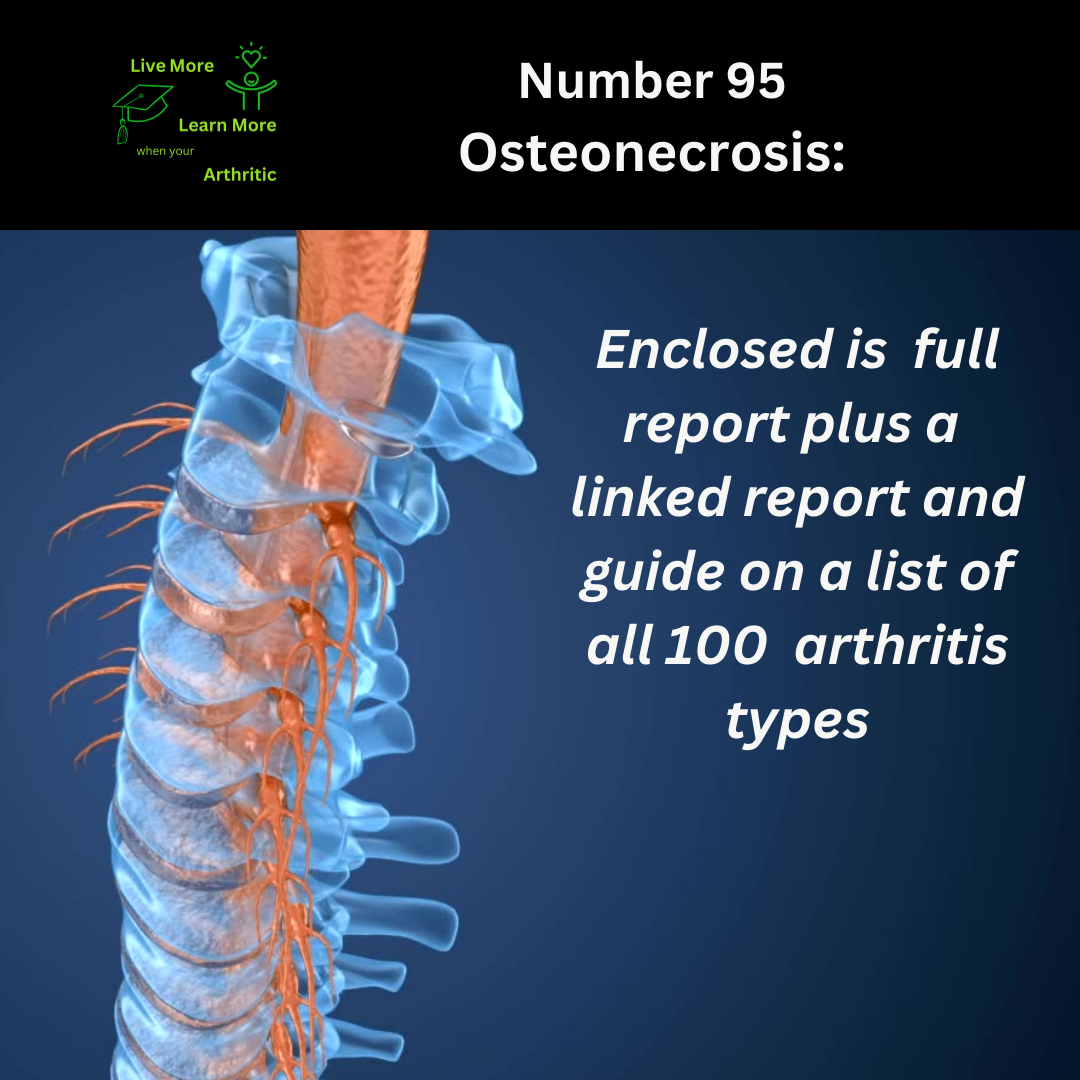
Osteonecrosis: 95 on the list of 100 types of Arthritis
Exploring Osteonecrosis: The Challenge of Bone Death
Most Affected Body Parts and Joints
Osteonecrosis, also known as avascular necrosis, primarily affects the weight-bearing joints and bones, with the hips being the most commonly affected site. Other areas commonly affected include the knees, shoulders, ankles, and wrists.
Osteonecrosis is a condition characterized by the death of bone tissue due to a lack of blood supply. Without adequate blood flow, the affected bone deteriorates, leading to bone collapse, joint pain, and loss of function. The condition can progress slowly over time or occur suddenly, depending on the underlying cause.
Causes and Triggers
The causes of osteonecrosis can be multifactorial, including:
- Trauma or injury that disrupts blood flow to the bone
- Chronic steroid use, which can impair blood vessel function
- Excessive alcohol consumption, leading to fatty deposits in blood vessels
- Medical conditions such as sickle cell disease or lupus, which increase the risk of blood clotting and vascular damage
- Joint diseases like osteoarthritis, which can compromise blood supply to the bone
Symptoms and Limited Range of Motion
Common symptoms of osteonecrosis include joint pain, stiffness, and limited range of motion. As the condition progresses, individuals may experience difficulty walking or performing daily activities due to pain and joint dysfunction.
Age of Onset and Demographics
Osteonecrosis can occur at any age but is most commonly diagnosed in individuals between the ages of 30 and 50. However, it can also affect younger individuals, especially those with risk factors such as a history of trauma, chronic steroid use, or underlying medical conditions.
Complications and Impact on Quality of Life
Untreated osteonecrosis can lead to progressive joint damage, collapse of the affected bone, and ultimately, joint replacement surgery. Chronic pain, disability, and decreased quality of life are common consequences of advanced osteonecrosis.
Is it Autoimmune?
Osteonecrosis is not considered an autoimmune disease but rather a result of compromised blood flow to the bone, leading to tissue death.
Risk Factors
Several risk factors increase the likelihood of developing osteonecrosis:
- Trauma or injury to the affected joint
- Prolonged use of high-dose corticosteroids for medical conditions
- Excessive alcohol consumption
- Certain medical conditions affecting blood vessels or clotting
- Joint diseases such as rheumatoid arthritis or systemic lupus erythematosus
Achieving a Higher Quality of Life
A proactive approach to managing osteonecrosis can improve quality of life and delay disease progression:
- Lifestyle modifications such as weight management and limiting alcohol intake
- Physical therapy to improve joint function and range of motion
- Joint-preserving treatments such as core decompression or osteotomy to reduce pressure on the affected bone
- Surgical interventions like joint replacement for advanced cases
Complications of osteonecrosis include progressive joint destruction, bone collapse, and the need for joint replacement surgery. In severe cases, chronic pain and disability can significantly impact daily activities and overall well-being.
Interconnected Diseases or Conditions
Osteonecrosis can be associated with other conditions affecting blood vessels or joint health, such as deep vein thrombosis, atherosclerosis, or inflammatory arthritis. Close monitoring and comprehensive care by healthcare providers specializing in bone health and vascular medicine are essential for managing interconnected conditions and optimizing outcomes.



